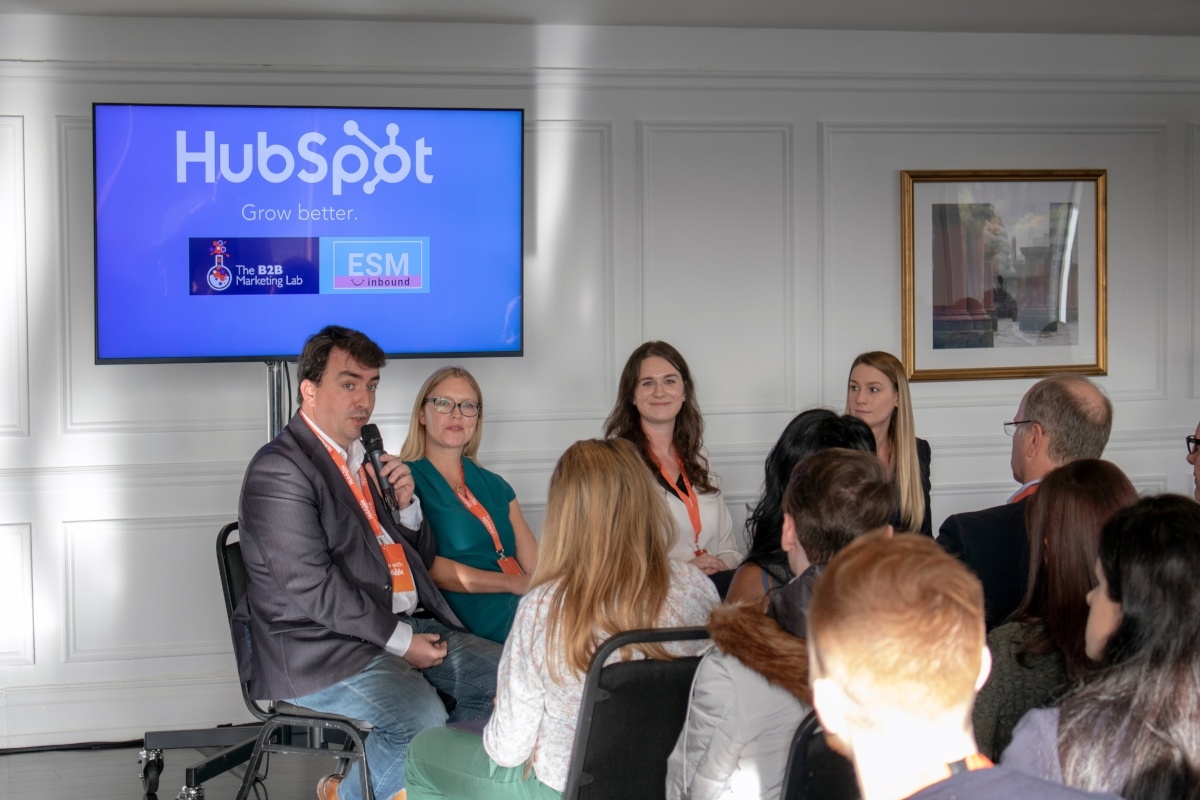
Get weekly
HubSpot updates
The short answer to the question is: HubSpot is free. At entry-level, businesses can access a basic level of HubSpot without paying. The free package includes email marketing and a CRM system with basic lead capture and ad management tools alongside some kickback automations included. For those who are wondering how worthwhile these free tools could be to their business, I’m going to outline below how an effective CRM automation tool for lead-capturing works. Let’s take as our example an imaginary prospect selling cloud storage solutions to SMEs:
-
Arrives on a Pillar page after googling: ‘Best secure cloud storage for small business’
-
Reads to the end of the page and fills in a contact form to download a PDF of the pillar page.
-
Gets follow-up email three days later containing a link to a piece of associated content (for example, on migrating from one cloud storage system to the new one). The idea is to build up interest gradually, and to add value to customers in terms of knowledge and resources before a sale is made.
-
If the prospect clicks through to this follow-up blog post, HubSpot records the visit, and (for Marketing Pro or Enterprise customers) sends either a link to further content, or a follow-up email saying: ‘If you’d like to know more about secure cloud storage for your data, book a free consultation call by emailing saleperson@bestcloud.com.'
-
The same client then visits your pricing page, and HubSpot sends an automated notification to you or your sales team to let you know this same customer is now on your pricing page. You know that they are a qualified lead, and that it’s a good time to put in a call. In this way, HubSpot can save your sales team significant time and money.
This free HubSpot package, containing basic automations such as the one outlined above, has been available for years, although the perception in the marketplace is still that HubSpot is an expensive alternative to other CRMs aimed at small and medium-sized businesses, including MailChimp, Constant Contact, Drip and Campaign Monitor. The reason this belief persists is that Hubspot has tended to focus on pitching its Pro package to customers, which has a higher sticker price than the tools aimed at small businesses.
How good are HubSpot’s free tools?
HubSpot’s free tools can add instant value to your business. Many in the mid-market audience have tended to hack together a range of low-priced tools, making do with that rather than taking the plunge and committing to the higher sticker price of HubSpot Pro. I know this not only because customers are often surprised when we outline the free tools and HubSpot’s competitive packages, but because it’s a misconception I had myself. Five years ago we were looking for a new CRM for SpotDev. After initially disqualifying HubSpot as unsuitable and expensive, we discovered the free tools, and the easy-to-navigate interface. We signed up, and quickly felt the benefit.
In particular, it was transformative to finally have all our data in one place. Being able to see our marketing and sales data alongside one another and being able to analyse how our website was generating leads, and how these turned into customers, was invaluable. We were finally able to quantify our marketing efforts in terms of revenue, rather than just focusing on impressions or clicks. The free tools served us so well that we stuck with them before moving onto the PRO tier a few months later.
To give you some further exampIes of how HubSpot’s free tools can add instant value, I know many clients with a WordPress site pay £300 a year for their forms, and many others pay up to £3600 a year for a live-chat function on top. Both of these are included in the free suite of HubSpot tools. What’s more, to take MailChimp as a comparison, HubSpot allows greater freedom of editing in the email builder, thanks to the new drag and drop functionality.
HubSpot also gives you more precise attribution and analytics data for your email marketing, which increases its sales value. For businesses who want more sophisticated functionality, onboarding, or customisation, they will be better suited to the Pro or Enterprise packages, and with these, the cost increases.
Simple Onboarding
Where clients want to integrate, or part-integrate an existing CRM into Hubspot, this is also something we can help with. The assimilation between HubSpot and other CRMs and business tools and apps is excellent. In recent years HubSpot has moved from being what they call an all in one system, like it used to be, to being an all on one platform, so in other words HubSpot becomes the hub that all of your other tools plug into. The onboarding of this can be as simple as migrating data from excel into Hubspot (we help clients do a lot of this). Integration is more complex and involves creating an API connection or using middleware.
At SpotDev, we support clients to come online with the free HubSpot tools as well as those who want to go straight in at the Marketing Professional tier. We can provide onboarding support for a set fee to get you set up, and we can advise you on if and when to upgrade. There are three tiers of paid-for HubSpot subscriptions: Starter, Professional and Enterprise. Let’s run through each of these in turn.
MARKETING STARTER: Comes in at £42 per month. It covers you for up to 1,000 contacts for marketing emails. If you want additional contacts included, there is an incremental payment scale. For advice on how to import your contacts with minimum fuss, read our post Resubscribing Your Contacts In Hubspot: The Golden Rules.
Marketing Starter also allows you to remove the branding features such as the ‘powered by HubSpot’ tagline that you have with the free tools. It also includes a drag and drop landing page builder. With Marketing Starter, you also increase the number of smart lists from five to 25.
MARKETING PROFESSIONAL: Costs from £655 a month. This tier includes more automation tools, blog and pillar page creation tools, landing page tools, and some SEO and content optimisation tools along with social media tools for monitoring, scheduling and reporting.
MARKETING ENTERPRISE: Costs £2,624 a month. At this tier, customisation is significantly more advanced. Ideally suited for those requiring complicated permissions and gated membership sites, Marketing Enterprise provides predictive lead scoring, event based triggers, reporting and segmentation, YouTube integration and calculated properties.
HubSpot competitor comparisons
These numbers facilitate some useful HubSpot competitor comparisons which are a good way to get an accurate sense of where HubSpot’s pricing structure is pitched in relation to its competitors. So when you compare HubSpot Starter to MailChimp, it is really cost-effective, as with MailChimp, you are likely to need to pay extra for additional tools. Similarly, Comparing HubSpot Professional to Marketo or Eloqua, and HubSpot is usually more affordable.
Compare Enterprise to Salesforce Marketing Cloud, Adobe Marketing Cloud and Sitecore and it looks super-cheap. What’s more, not all CRMs are created equal - and HubSpot’s content management platform outstrips the competition by easily integrating with your CRM data and allowing for quick & easy editing of your pages - without the need for developer support.
The problem with many CRMs is that the true cost of them can be hard to gauge. The onboarding costs can mount up significantly, and particularly where extra support and training is required, or customisation, it may be difficult to get an accurate idea of the cost upfront.
With SpotDev, we can onboard you to Hubspot for a total cost of £1,425. If you buy Hubspot Pro or Enterprise Edition, onboarding is compulsory.

